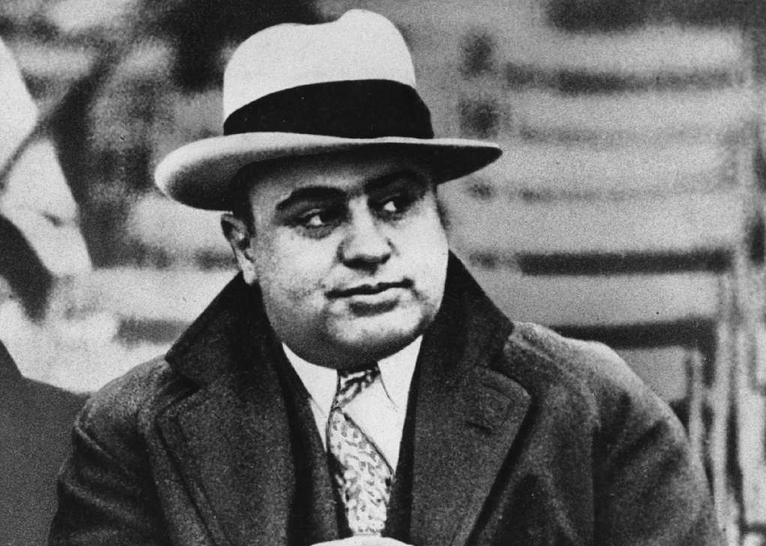There's a compulsion among even Canada’s most exciting cities to link themselves to Chicago. Obama once said that Toronto reminds him of Chicago, and now the city to the north won't let anyone forget it. Montreal, meanwhile, tethers itself to Chicago jazz with the twine of Oscar Peterson, who recorded four albums at the legendary London House.
But in between these two metropolises sits the only Canadian town to earn the moniker “Le Petit Chicago.”
Historic Hull is a mid-sized city in Canada’s primarily French speaking province of Quebec. The French newspaper Le Droit has described Hull as having “le leur liberté aux aléas d’une ville frontalière” — roughly translated as “the freedom to the vagaries of a border town.”
Even more roughly translated, that means that people in Historic Hull play fast and loose.
Directly across the river from the manila envelope of Ottawa, Canada’s capital, Hull has always deviated sharply from its provincial neighbor. Upon swearing allegiance to the crown, Bostonian Philemeon Wright settled the area at the beginning of the 19th century. One of the first buildings he built was a brewery, to fulfill the needs of those who worked for him. The provision of libations continues to be key to the city's character today.
But Hull is not called “Little Boston.”
The connection between Chicago and Hull first forged when, decades apart, fire decimated both cities. This required both Chicago and Hull to restructure their urban landscapes, but it also scrambled their populations. By the end of the first world war, with the extended immigrant population that came with it, the cities possessed mirroring immigrant populations, booming with disenfranchised settlers desperate for work.
Prohibition fortified the connection. Though Al Capone once quipped, “I don’t even know what street Canada is on,” the gangster ran cross-border bootlegging operations and kept hideaways in the north. Today, many Canadian cities and companies use visits by Capone to bolster their Chicago cred.
The province of Quebec (and in effect, Hull) didn’t cooperate with the their own government's version of Prohibition, which took effect a few years before the U.S. banned alcohol. In fact, Quebec only adhered to the temperance movement for a few months. Consequently, it became a sanctuary for those looking to brew and sell booze, and soon, Hull was Canada's drinking capital.
This ushered in the cinq à sept ("the five to seven") after-work drinking hour, during which thirsty Ontarians headed to Hull in droves. Local law enforcement named the Alexandra Bridge, which connects the two provinces, “the bridge of a thousand thirsts.” Speakeasies known as “blind pigs,” which were often little more than dirt-floored barns, spotted the river edges.
Like the gangster-ruled Chicago of the time, Hull became known as an island of vice in a sea of temperance. Though Capone was never spotted in Hull himself, his cousin was said to have stayed at Chez Henri, a Parisian-style castle hotel operated by chef Henry Burger.
Hull wasn’t the only Canadian town to smuggle booze into the U.S. But unlike other rum-running cities, Hull wasn’t quiet about it. The city embraced the Prohibition lifestyle: flappers, dancing, jazz. Louis Armstrong, Ella Fitzgerald, and Duke Ellington passed through, and places like the Standish Hotel offered a more upscale version of the riverside taverns. The culture continued well into the ’40s and ’50s, with the Hull Country Club constructing “an enormous, barn-like, wooden structure … behind the house as a night club for dancing and entertainment, per its website.
Yet another reason Hull earned its nickname is its history of venality — including a crime rate that supposedly rivaled that of Chicago’s during Capone’s reign. In an article for the Institute of History in French America, André Cellard explains how Hull gained its reputation as “le paradis de la liberation” (the paradise of release), a discharge that included a large network of organized crime.
During the 1930s, gambling dens, brothels, and other ill establishments proliferated. As University of Ottawa professor Marc Brousseau explains, “money found its way into the small working-class town and accusations of corruption began to target municipal officials.”
The disco era extended Hull's reputation as a nightlife hub, with establishments like Viva Disco, once named in Playboy as a top destination to boogie down, replacing the blind pigs. Hull became rougher still. The crime rate exploded. Much like the Chicago 21 plan, which displaced residents outside of the Loop, government officials clear cut a massive portion of downtown to build a large office complex, dislocating 4,000 residents and uprooting countless small businesses.
Through a merger with surrounding towns, Hull has since been rebranded as a larger area known as “Gatineau.” The area's tourism board, Tourism Outaouais, feels that Le Petit Chicago's past isn’t significant enough “to [overshadow] the vast family dynamic in tourism in the entire region.”
Still, evidence of the little one remains. Chez Henri still stands, along with a few other blind pigs, more sterilized than it once was. Fresh establishments that have moved into the old buildings are working to preserve their character. There's even a new jazz bar itself called Le Petit Chicago.
Despite its changes, Hull's attitude of Je m'en fiche (translation: I don’t care) can be found in tiny restaurants like Edgar, which serves Dutch babies with hunks of white cheddar the size of your fist, and in the sub-zero surfers riding the swells of the Ottawa River. Even the city’s first brewery is still standing in its original state, functioning as God and Philemeon Wright intended: You can drink there at age 18 — a year younger than in buttoned-up Ottawa, and a full three years before you can in its role model Chicago.



